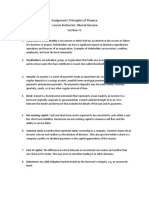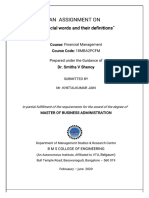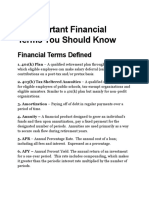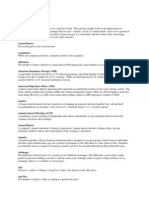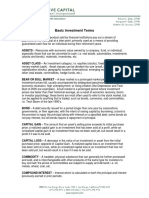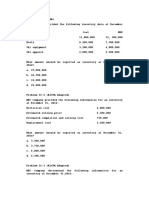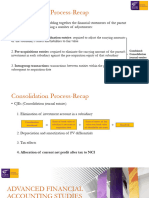0% found this document useful (0 votes)
31 views10 pagesIB Terminologies
The document provides a comprehensive list of key terminologies in investment banking, including concepts such as Mergers and Acquisitions, IPOs, and various types of financing. It covers essential terms related to market dynamics, risk management, and roles within investment banking. Each term is briefly defined to aid understanding of the investment banking landscape.
Uploaded by
Shruti ShuklaCopyright
© © All Rights Reserved
We take content rights seriously. If you suspect this is your content, claim it here.
Available Formats
Download as PDF, TXT or read online on Scribd
0% found this document useful (0 votes)
31 views10 pagesIB Terminologies
The document provides a comprehensive list of key terminologies in investment banking, including concepts such as Mergers and Acquisitions, IPOs, and various types of financing. It covers essential terms related to market dynamics, risk management, and roles within investment banking. Each term is briefly defined to aid understanding of the investment banking landscape.
Uploaded by
Shruti ShuklaCopyright
© © All Rights Reserved
We take content rights seriously. If you suspect this is your content, claim it here.
Available Formats
Download as PDF, TXT or read online on Scribd
/ 10



















